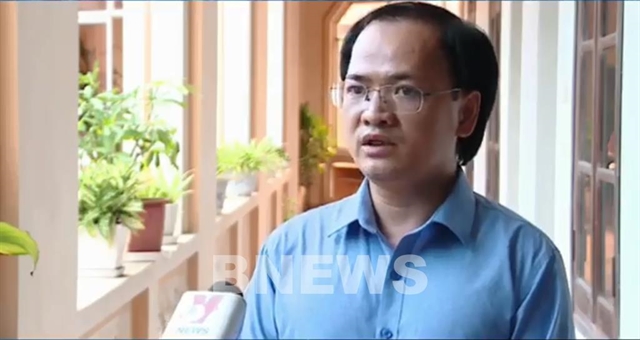 Opinion
Opinion

 |
| Deputy Director of Lạng Sơn Department of Industry and Trade Liễu Anh Minh. — VNA/VNS Photo |
After more than two years of being seriously affected by the COVID-19 pandemic, border trade activities at key border gates in Lạng Sơn Province have gradually recovered, but there are still challenges ahead. Liễu Anh Minh, deputy director of Lạng Sơn Department of Industry and Trade, speaks to Vietnam News Agency about this issue.
Can you give us your overview on the development of border trade activities in Lạng Sơn Province after two years of hiatus caused by the COVID-19 pandemic?
Import-export activities at key border gates in Lạng Sơn Province, a gateway connecting major economic centres of Việt Nam to other countries in the region, had been affected by the COVID-19 pandemic in the past two years.
Additionally, China also regularly changed mechanisms and policies on food safety, quality control and traceability of goods, causing congestion at the border.
However, with the close direction of the local government and the efforts of agencies, the province has succeeded in maintaining trade between China and Việt Nam through Tân Thanh, Hữu Nghị and Chi Ma border gates.
The province is also piloting the digital border gate platform to comprehensively manage import and export activities.
The number of vehicles through Lạng Sơn Province to China is currently between 700 and 800 per day. Of these, 400 transport agricultural products.
Customs clearance activities are mainly at four border gates: Tân Thanh, Hữu Nghị, Đồng Đăng and Chi Ma. The number of vehicles increases by more than 50 per cent compared to the previous year, partly meeting the export demand for fruits and agricultural products of localities.
Customs clearance capacity at border gates is still limited, not meeting the requirements for official export. What solutions does Việt Nam need to overcome this situation while many countries tighten regulations on goods after the pandemic?
From 2021, China issued Order No. 248 and 249 on food safety management for exports and regulations on official export under international practices and China's standards.
Currently, Việt Nam's agricultural products exported to the Chinese market through Lạng Sơn Province's border gates still cannot meet the requirements of the official export.
For this issue, the province has advised ministries and sectors synchronously implement solutions to issues related to origin, growing areas, and preliminary processing of agricultural products; and give instructions on preservation and packaging according to Chinese regulations to support the official exports to the Chinese market.
The province also focuses on raising businesses' awareness and capacity to realise the benefits of official export to the Chinese market.
What are your suggestions to promote border trade activities in the locality?
The province has asked central agencies to support the locality in developing infrastructure in the border areas.
In addition, Việt Nam needs to actively negotiate with China to expand official exports to the Chinese market in the future.
Do you have any suggestions to attract investment in trade infrastructure development besides investment capital from the State budget?
In order to develop Việt Nam's border trade infrastructure by 2025, with a vision to 2030, the provincial Department of Industry and Trade has advised the People's Committee to develop a project on the development of border and mountainous market infrastructure and issue policies to support building rural markets.
The policy to support enterprises and cooperatives to invest in the construction of rural markets has been issued since the end of 2017. Lạng Sơn Province has revised and issued new policies to suit the actual situation.
In the future, the province will focus on doing well planning and attracting investment in the development of the country's border trade. — VNS




